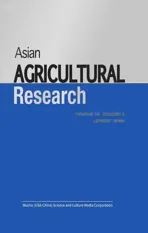Intellectual Property Protection and High-Quality Development of Xinjiang Melons under the Big Food Concept
2023-08-30MiaomiaoXUYulanBAIJinjinWANGYuanpengSUNJinZENGZhiguoSUN
Miaomiao XU, Yulan BAI, Jinjin WANG, Yuanpeng SUN, Jin ZENG, Zhiguo SUN
1. Research Base for Forging the Sense of Community for the Chinese Nation, Hubei University of Science and Technology, Xianning 437100, China; 2. College of Economics, Xinjiang University of Science and Technology, Korla 841000, China
Abstract The development of diversified foods such as melons under the big food concept can reduce the pressure on staple food grain. Xinjiang has the advantages of building a new development pattern of dual circulation of diversified food industry and establishing a national diversified food safety and high-quality assurance center. The construction of an agricultural power needs the strategic support of an intellectual property power. This paper introduced and studied Xinjiang’s melon industry and its agricultural intellectual property resources, analyzed the six main problems, including many idle land resources have not been developed into melon fields and the role of melons in diversified food supply systems not well played. Finally, it proposed to vigorously develop diversified food industries such as melons in Xinjiang and establish an eight-point strategy such as national diversified food safety and high-quality assurance center.
Key words Big food concept, Strategy of building an intellectual property power, Melon, Intellectual property, Inheritance, Innovation and development, Xinjiang
1 Introduction
China relies on imports for 40% of its grain and 60% for its edible oil, and food security is always the Sword of Damocles hanging over its head, especially in the event of war in the South China Sea and the obstruction of import sea channels.
Big food concept is a concept of "developing food resources in an all-round and multi-way way from farmland, grassland, forest and ocean, to plants, animals, microorganisms, and developing food resources in an all-round and multi-channel", and it is an important content to promote agricultural supply-side structural reform.
No.1 central document of 2023 requires that the stable production and supply of grain and important agricultural products must be put in the first place. Among them, the deployment of making every effort to do a good job in grain production, expanding soybean oil seeds, developing modern facility agriculture, building a diversified food supply system, and coordinating the regulation and control of grain and important agricultural products is a concrete embodiment of the "big food concept". The big food concept[1-5]emphasizes diversified foods, including grain and edible oil, fruits and melons, vegetables, edible fungi, meat, milk, honey, aquatic products,etc.The development of diversified foods such as melons under the big food concept can reduce the pressure on staple food grain. However, under the premise of ensuring ecological security in an orderly and reasonable manner, the development space of inland land resources with high population density is small. Before the revolutionary leap in "agricultural chips", China mainland has little potential to improve the diversified food supply system from the perspective of food volume. Xinjiang accounts for one-sixth of China’s total land area, with nearly 3.31 million ha of farmland and more than 10 million ha of reclaimable wasteland, huge space for land resources development, rich and diverse food resources, sufficient sunshine time, suitable for the development of mechanized agriculture. Xinjiang is also located in the core area of the Silk Road Economic Belt, bordering eight countries including Russia, Kazakhstan and Kyrgyzstan, with 19 border ports and China-Europe railway arteries. It has the advantages of building a new development pattern of diversified food industry and creating a national diversified food safety and high-quality assurance center, and has great potential to contribute to food security strategy and national security strategy. The rapid development history of its cotton production and the rapid rise of fruit products in recent years[6]have proved Xinjiang’s advantages in this regard.
CucumismeloL. is a climbing or creeping herb of the genusCucurbitaceae, originated in eastern Africa, and the secondary centers of origin are West Asia, Central Asia (including Xinjiang), and South Asia. China usually divides the meons into the thick-skinned melon subspecies (Cucumismelossp. melo var. cantalupensis,C.melossp. melo var. ameri) and the thin-skinned melon subspecies (Cucumis.melossp. agrestis var. chinensis,C.melossp. agrestis var. makuwa Makino)[7-8]. Xinjiang is the home of China’s melons and one of the secondary centers of origin of the world thin-skinned melons. No.1 central document of 2023 states that we should base ourselves on the national conditions and agricultural conditions, reflect Chinese characteristics, build an agricultural power with strong supply security, strong science and technology and equipment, strong management system, strong industrial resilience and strong competitiveness.
Obviously, the construction of an agricultural power needs the strategic support of an intellectual property power, because agricultural intellectual property rights[9-13]are a strategic resource for national agricultural development, a core element of international agricultural competitiveness, and an important production factor of rural knowledge economy, which can create a powerful engine for high-quality agricultural development. Therefore, we studied the intellectual property protection, inheritance, innovation and development of Xinjiang melon.
2 Xinjiang melon industry
2.1 Planting area and yieldThe planting area of Xinjiang melons reached 62.65 thousand ha (Table 1). Xinjiang planted 51.74 thousand ha, accounting for 82.58%. Among them, the seven cities and prefectures in northern Xinjiang planted only 2.65 thousand ha, accounting for 4.23% of the whole autonomous region; 17.91 thousand ha, accounting for 28.59%; the five prefectures of southern Xinjiang planted as high as 31.18 thousand ha, accounting for 49.77%. The Xinjiang Production and Construction Corps planted 10.91 thousand ha, accounting for 17.41% of the whole autonomous region.
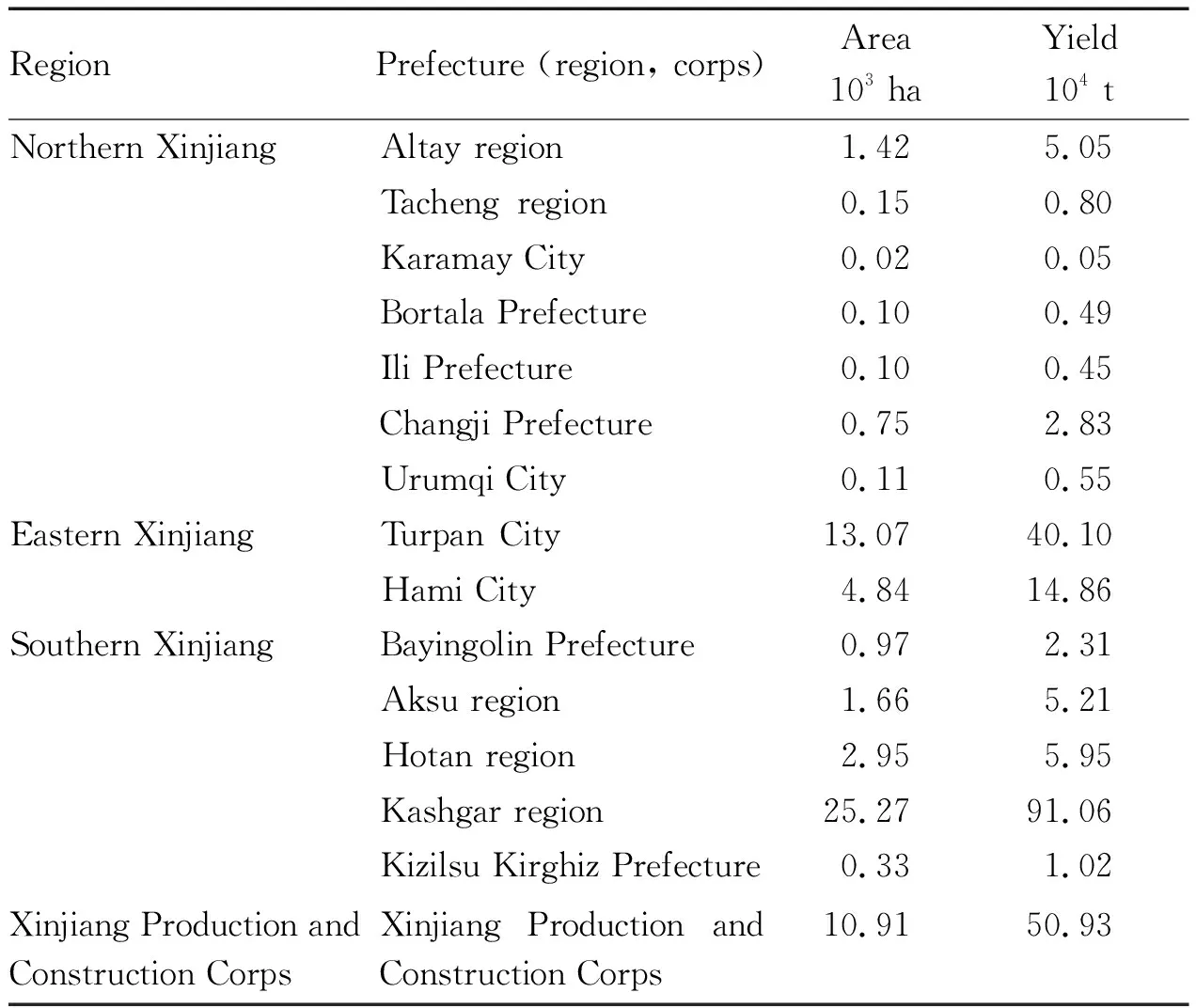
Table 1 Planting area and yield of Xinjiang melons
The yield of Xinjiang melons reached 2 216 600 t (Table 1). The yield of Xinjiang was 1 707 300 t, accounting for 77.02%. Among them, only 102 200 t of cities and prefectures in northern Xinjiang, accounting for 4.61% of the whole autonomous region; 549 600 t in the two cities of eastern Xinjiang, accounting for 24.79%; the five prefectures in southern Xinjiang reached 1 055 500 t, accounting for 47.62%. The yield of Xinjiang Production and Construction Corps was 509 300 t, accounting for 22.98% of the whole autonomous region. In Xinjiang (Table 1), the main melon producing areas are Kashgar region, Turpan City, Hami City, Hotan region, Aksu region and Altay region, with yield of 910 600, 401 000, 148 600, 59 500, 52 100 and 50 500 t, separately accounting for 41.08%, 18.09%, 6.70%, 2.68%, 2.35%, and 2.28% of the autonomous region.
2.2 Advantageous counties of characteristic agricultural products (divisions of the corps)Among the local counties in Xinjiang (Table 2), the top 10 melon advantageous counties (cities and districts) are: Jiashi County, Shanshan County, Gaochang District, Yiwu County, Toksun County, Makit County, Yizhou District, Fuhai County, Yecheng County, and Hotan County. Among them, there is Fuhai County in northern Xinjiang; there are Shanshan County, Gaochang District, Yiwu County, and Toksun County in eastern Xinjiang; there are Jiashi County, Makit County, Yizhou District, Yecheng County, and Hotan County in southern Xinjiang.
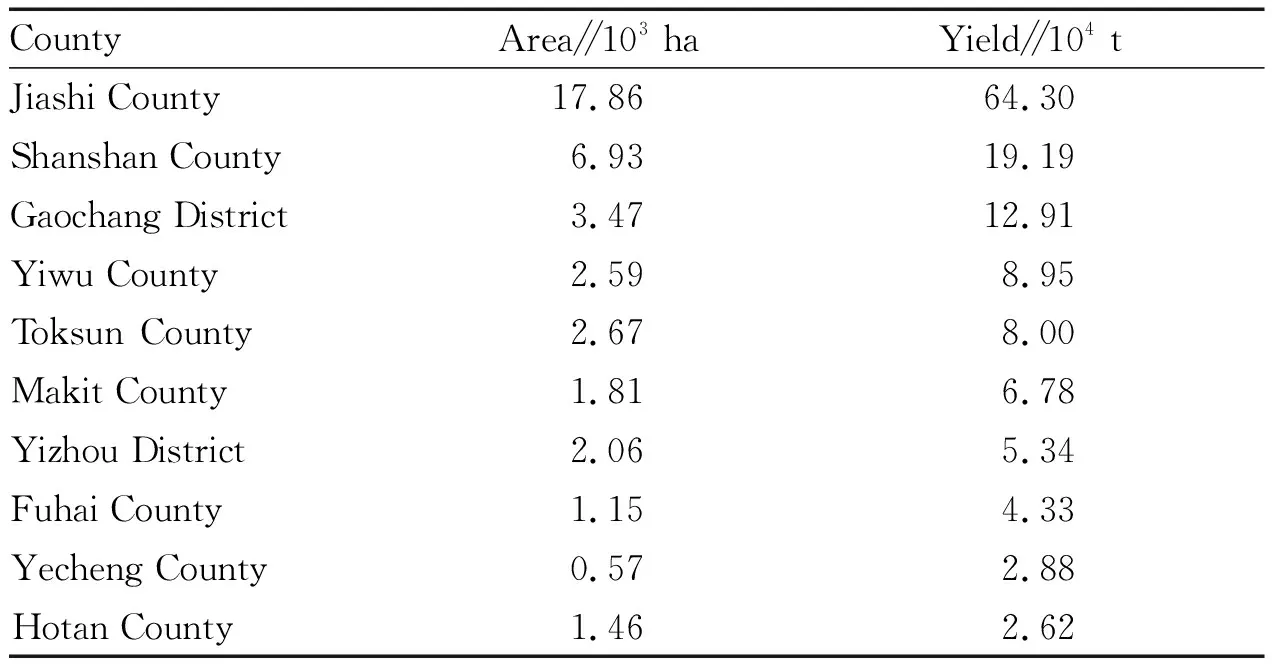
Table 2 Planting area and yield of the top 10 melon counties (cities and districts) in Xinjiang
In Xinjiang Production and Construction Corps (Table 3), the main production areas of melons are the 8thDivision Shihezi City, the 6thDivision Wujiaqu City of, the 3rdDivision Tumshuk City and the 13thDivision Xinxing City, with yield of 164 900, 159 900, 101 400 and 38 700 t, respectively, accounting for 7.44%, 7.21%, 4.57% and 1.75% of the whole autonomous region.
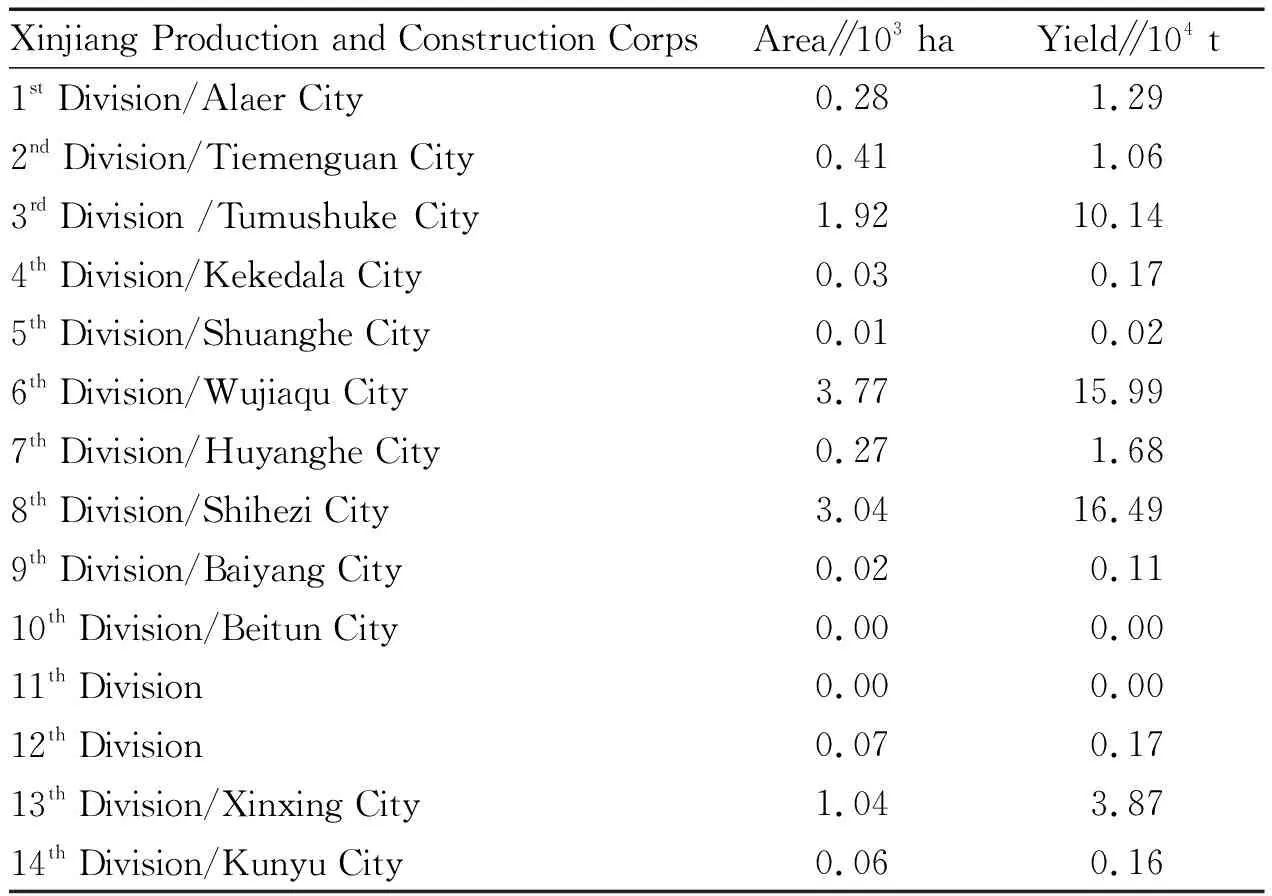
Table 3 Planting area and yield of melons in Xinjiang Production and Construction Corps
2.3 "One village, one product" demonstration villages and townsAmong the "one village, one product" demonstration villages and towns in Xinjiang, there are 11 villages and towns whose leading products are melons (Table 4).

Table 4 National "one village, one product" demonstration villages and towns for melons in Xinjiang
2.4 Advantageous areas of characteristic agricultural products and advantageous characteristic industrial clustersAmong the 308 national advantageous areas of characteristic agricultural products, there is Turpan City Gaochang District Turpan Hami melons advantageous areas of Chinese characteristic agricultural products. However, in the list of construction of 140 national advantageous and characteristic industrial clusters, there is no Xinjiang melon.
2.5 Regional improved variety breeding base and germplasm resource bank (nursery)In Xinjiang, there are two national regional improved variety breeding bases (Changji Prefecture and Shanshan County), with crops of melons and watermelons. The relevant national seed breeding bases in Hainan include Sanya City, Ledong Li Autonomous County, Lingshui Li Autonomous County in Hainan Province, Xundian County and Yuanmou County in Yunnan Province. Among the 72 national crop germplasm resource banks (nurseries), Xinjiang melon has the national Central Asian characteristics (Urumqi) germplasm resources medium-term bank, and the professional germplasm resource bank in other places has the national watermelon melon germplasm resource medium-term bank (Zhengzhou).
2.6 Foreign trade transformation and upgrading bases and exportsThere are only three national foreign trade transformation and upgrading bases related to the melon industry in northern Xinjiang: 8thDivision Shihezi City National Foreign Trade Transformation and Upgrading Base (Agricultural Products) in Xinjiang Production and Construction Corps, 10thDivision Beituni City National Foreign Trade Transformation and Upgrading Base (Agricultural Products) in Xinjiang Production and Construction Corps, and National Foreign Trade Transformation and Upgrading Base (Canned Fruits and Vegetables) in Urumqi City, Xinjiang Autonomous Region.
3 Intellectual property resources of Xinjiang melons
3.1 Traditional knowledgeXinjiang’s melon industry is rich in traditional knowledge, mainly including traditional planting techniques, important agricultural cultural heritage (unique land use system and agricultural landscape, ancient melon orchards,etc.), traditional processing technology, traditional production techniques of related traditional foods, traditional medicine for melon medicinal use (especially traditional Chinese medicine, Uygur medicine, Kazakh medicine) knowledge (traditional pharmacology, formulations, prescriptions, treatment methods,etc.), traditional names of famous traditional melons and their traditional products,etc., which are important agricultural cultural contents in the main melon producing areas.
Among them, the relevant important agricultural cultural heritage in China includes Hami CityHami melons cultivation and tribunal melon cultural system, Turpan Karez agricultural system,etc.There is no relevant national intangible cultural heritage, and the intangible cultural heritage at the autonomous region level is only melon and fruit storage skills and Hami melons planting skills; names include Hami melons, Jiashi melons,etc.
3.2 Biogenetic resourcesAs one of the secondary origin centers of thin-skinned melons and the main producing area in China, Xinjiang has rich genetic resources of melons[14-16], with more than 100 varieties of melons, and also rich wild melons[17]. The subspecies of thin-skinned melons cultivated in Xinjiang mainly includeCucumismelovar. chadalak, summer melon varietyCucumismelovar.ameri, winter melon varietyCucumismelovar. inodorus, andCucumismelovar.cassaba, specifically including Qiligan (Guadanzi), Huangdanzi, summer melons, winter melons, Cassaba melons, Jiashi melons, Hami melons, Bailan melons, and Kanas melons,etc.In recent years, it has introduced Adana melonCucumismelovar. adana and thick-skinned melonCucumismelovar. cantalupa. The thin-skinned melon varieties includeCucumismelovar. chinensis,Cucumismelovar. conomon, Kuoligua (Xianggua), and Yuegua (Shaogua),etc.
3.3 New varieties of forest grass plantsIn China, there are two systems for the protection of new plant variety rights: new varieties of agricultural plants under the Ministry of Agriculture and Rural Affairs; new varieties of forest and grass plants under the State Forestry and Grassland Administration (SFGA). On May 20, 2005, the former Ministry of Agriculture issued the sixth batch of theProtectionListofAgriculturalPlantVarietiesofthePeople’sRepublicofChina, includingCucumismeloL. But it was not incorporated into theListofNewPlantVarietiesProtectionofthePeople’sRepublicofChina(ForestandGrassPart). By now, the Ministry of Agriculture and Rural Affairs has authorized 131 new varieties of melon (CucumismeloL.) agricultural plants. Among them, there are only two variety rights holders involved in Xinjiang: new varieties "Fengwei No.4" and "Fengwei No.5", and the variety rights holders are Hami melons Research Center of Xinjiang Academy of Agricultural Sciences.
3.4 PatentsXinjiang melon has been granted national patents since 1987, and a total of 340 national patents have been granted so far (Fig.1). Among them, 211 invention patents, accounting for 62.06%; 68 new utility patents, accounting for 20.00%; 61 design patents, accounting for 17.94%. The top 10 applicants (patentees) with the number of patents are shown in Table 5.
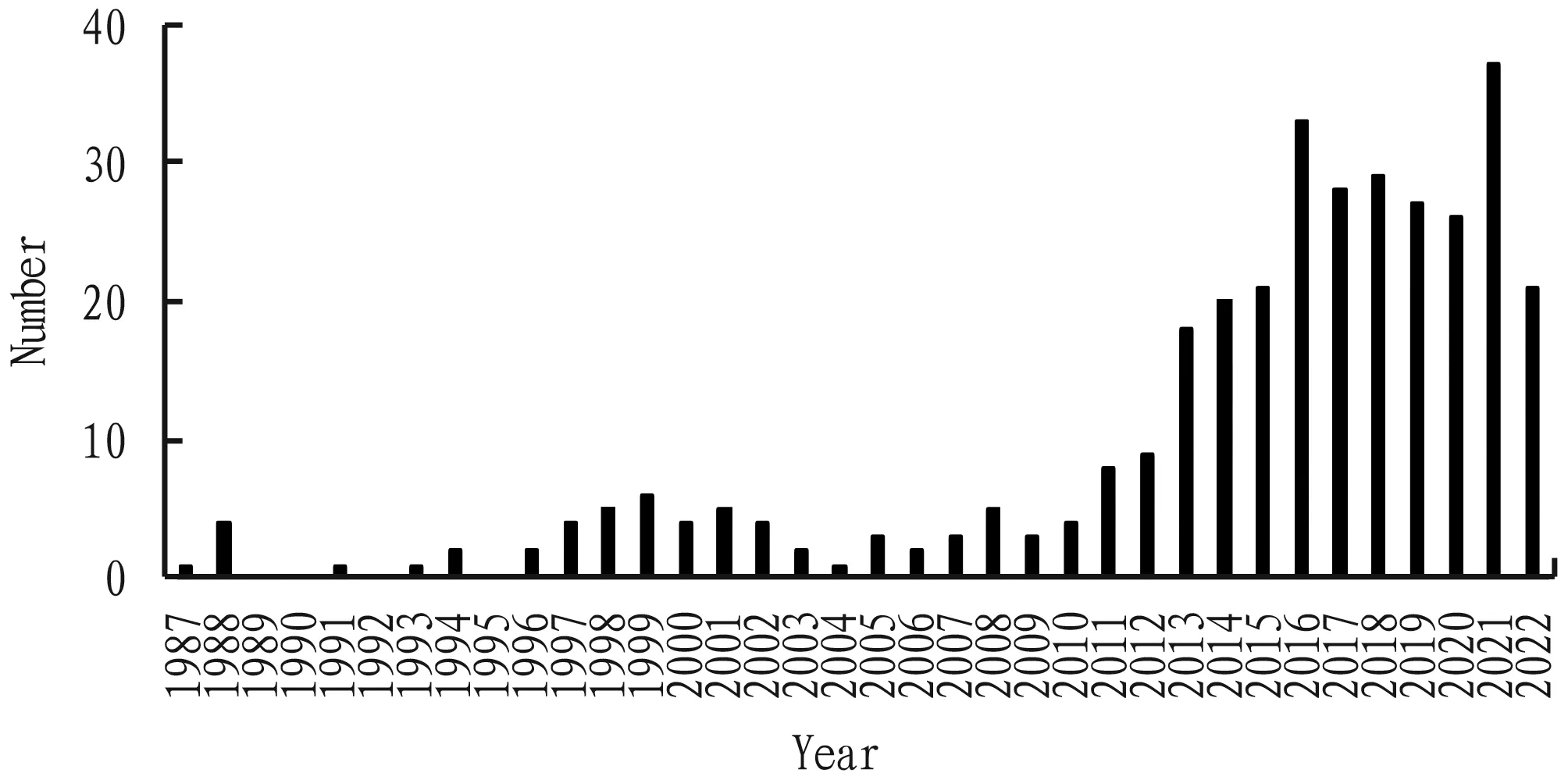
Fig.1 Number of national patents obtained in Xinjiang melon field during 1987-2022
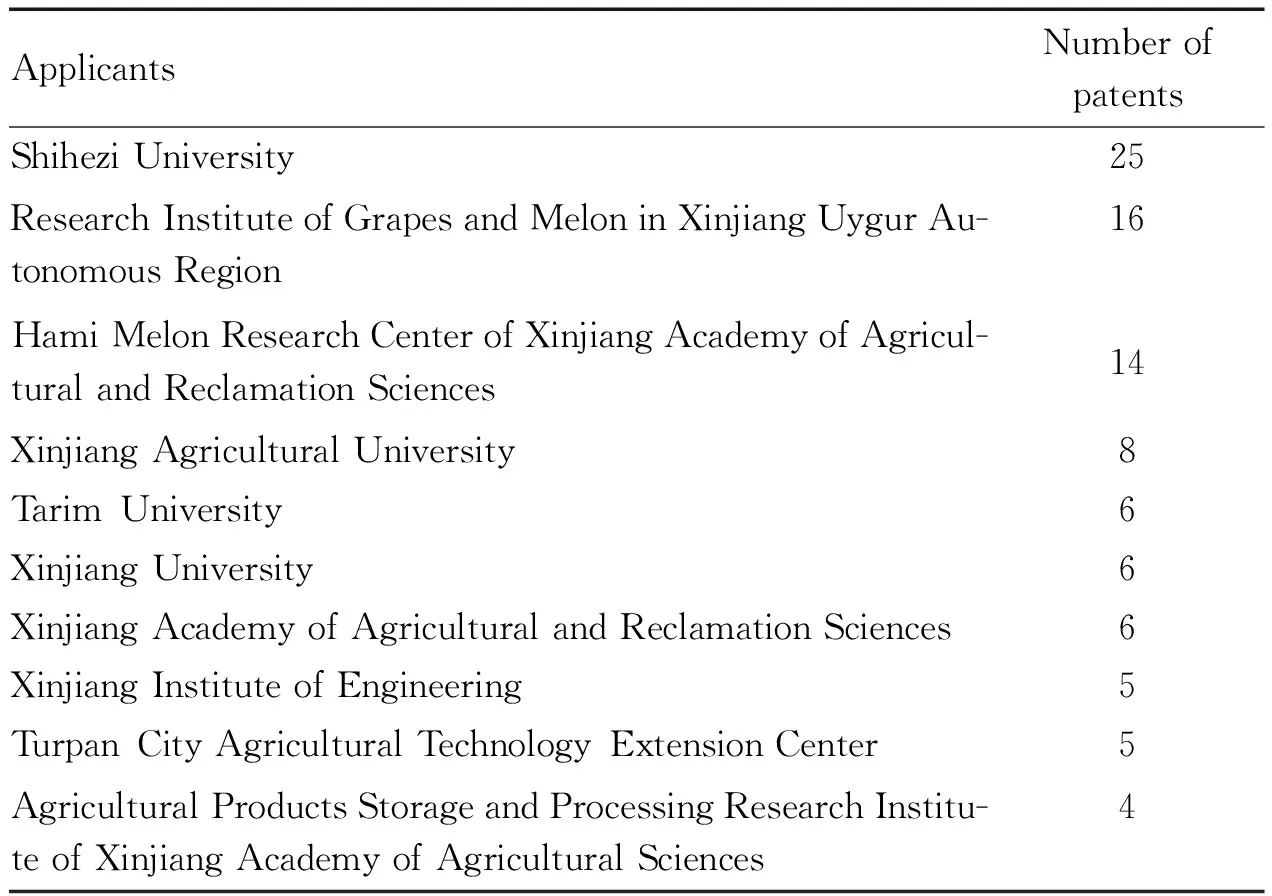
Table 5 Top 10 applicants with the number of national patents in the field of Xinjiang melon
These national industrial design patents generally belong to Class 9 of the industrial design Locarno Classification (LOC), namely, industrial design used for melon packaging and containers, belonging to the marking class intellectual property rights.
Xinjiang melons have obtained 44 national invention patents and 25 national new utility patents in the Planting Industry International Patent Classification (IPC) A01; obtained 3 national invention patents and 0 national utility patents in the breeding field IPC A01H; obtained 60 national invention patents and 20 national utility patents in food field IPC A21 and A23; and obtained 9 national invention patents but 0 national utility patent in medicine and health field IPC A61.
Xinjiang thin-skinned melon has obtained relatively few national patents, including 5 invention patents, 13 new utility patents and 0 industrial design patents.
3.5 Geographical indications (GI)In accordance withEU-ChinaAgreementonCooperationonandProtectionofGeographicalIndications, 275 Chinese geographical indication products will be protected in the EU, but not involving Xinjiang melons.
China’s geographical indication protection system is still not perfect. At present, there are three systems: (i) geographical indication products of the China National Intellectual Property Administration; (ii) geographical indication trademarks of the Trademark Office of the China National Intellectual Property Administration; (iii) geographical indications of agricultural products of the Ministry of Agriculture and Rural Affairs.
3.5.1GI products. Xinjiang melon has two kinds of GI products (Table 6). Among them, northern Xinjiang has no, eastern Xinjiang has Hami melons, and southern Xinjiang has Jiashi melons.

Table 6 GI products related to Xinjiang melons
3.5.2GI trademarks. Xinjiang melon has five geographical indication trademarks (Table 7). Among them, there are Wujiaqu melons in northern Xinjiang, Hami melons in eastern Xinjiang, and Jiashi melons, Hotan melons and Kashgar melons in southern Xinjiang. As shown in Table 8, the trademarks in Class 31 of the International Classification are fresh melons, while trademarks in Class 29 are preserved melons. Obviously, Xinjiang melon has not registered the GI trademark of processed products such as preserves and preserved melons, but only registered the GI trademark of fresh melons.

Table 7 GI trademarks related to Xinjiang melons
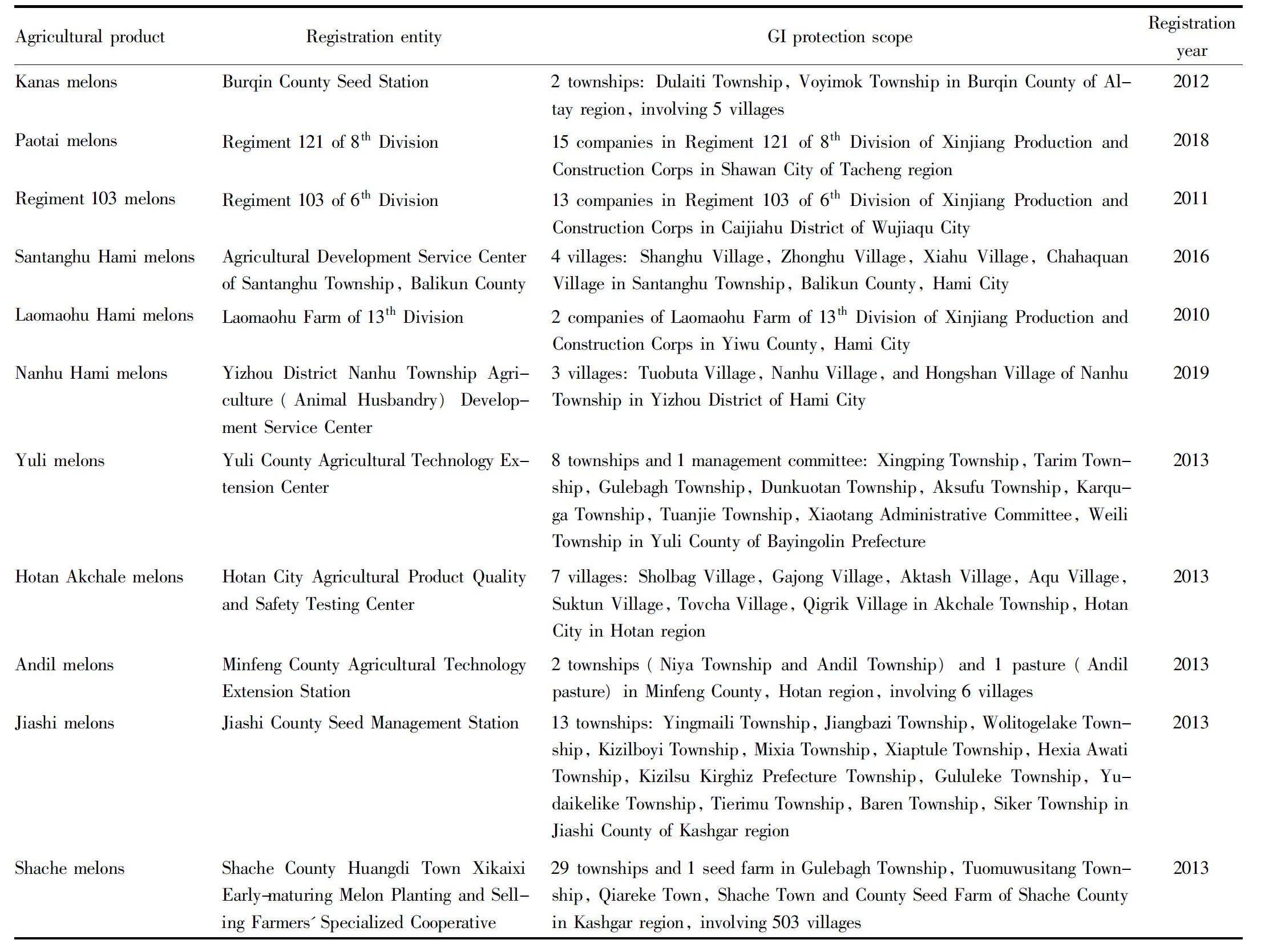
Table 8 Geographical indications of agricultural products of Xinjiang melons
3.5.3Geographical indications of agricultural products. Xinjiang melon has 11 kinds of geographical indications of agricultural products (Table 8). Among them, there are Kanas melons, Paotai melons, and Regiment 103 melons in northern Xinjiang, Hami melons in Santanghu, Hami melons in Laomaohu in eastern Xinjiang, and Weili melons, Hutan Akcharle melons, Andil melons, Jiashi melons, and Shache melons in southern Xinjiang.
3.6 TrademarksXinjiang melon industry has no special trademark or collective trademark, but there are many common trademarks, and related enterprises generally register their own private common trademarks for their products. There are five relevant certification trademarks in this industry, all of which are geographical indication trademarks (Table 7), which are regional public trademarks like collective trademarks. Xinjiang melon industry has no well-known trademarks in China, and its famous trademarks in Xinjiang are: ordinary trademarks "Tianshan Miwang" (Xinjiang Hami Tianshan Melon Industry Co., Ltd.), "Sanhai" (Xinjiang Sanhai Melon Garden Co., Ltd.), "Jiangguan" (Jiashi County Fruit Company),etc.
4 Main problems of intellectual property protection and high quality development of Xinjiang melons
4.1 Weak protection and sharing of heritage intellectual property rightsXinjiang melon has no relevant national intangible cultural heritage projects, global important agricultural cultural heritage, even autonomous region-level intangible cultural heritage projects, China’s important agricultural cultural heritage are very few. The protection of traditional food processing techniques related to melon has not received due attention. Relevant knowledge of traditional medicine (traditional Chinese medicine, Uygur medicine, Kazakh medicine) and local variety resources of melon have been seriously lost. The protection and sharing of heritage intellectual property rights such as traditional knowledge and biological genetic resources are weak.
4.2 Poor ability to create intellectual property rightsThere are few national patents related to melon, and overseas patents are even rarer, only new varieties of agricultural plants, and the ability to create intellectual property rights in planting, breeding, food, medicine and health, thin-skinned melon and other fields is even worse, with few independent intellectual property rights and few high-quality patents.
4.3 Lagging in the construction of industrial clustersMelon industry is a pillar industry of agriculture in Xinjiang, with a large scale, but the competitive enterprises in the industry, as well as the cooperative enterprises, specialized suppliers, service providers, related industry manufacturers and related institutions that interact with these enterprises, do not have a strong geographical agglomeration, just have an embryonic form, lag behind the construction of industrial clusters, and do not create national superior and characteristic industrial clusters.
4.4 Many idle land resources not developed into melon fields
Unlike the hinterland, which has long been overexploited, Xinjiang accounts for one-sixth of China’s total land area, with nearly 3.31 million ha of arable land and more than 10 million ha of reclaimable wasteland. There is huge space for land resources development, many idle land resources have not been developed into melon fields. In addition, soil improvement and high-standard melon field construction also need to be strengthened.
4.5 Few deep processing products of melon foodsMelons in Xinjiang are basically used as fresh foods, which brings about problems of preservation and storage, and is not conducive to the construction of a diversified high-quality food supply system. Melon can be processed into melon juice beverage, preserved melon, canned melon, melon wine, vacuum fine packaged melon,etc., and can also be added with nutrients, health products, medicines, but the deep processing products of Xinjiang melon food are few.
4.6 The role of melon in the diversified food supply system not well playedUnder the great pressure of food security, the big food concept is to "get heat and protein from farmland, grassland, forest and ocean, plants, animals and microorganisms, and develop food resources in an all-round and multi-channel way", which emphasizes diversified food and builds a high-quality supply system of diversified food. Xinjiang melon has a high yield and great potential for further development, which can play an important role in the diversified food supply system in the future, thus contributing to the national food security strategy and national security strategy.
5 Recommendations for intellectual property protection and high quality development of Xinjiang melons
5.1 Establishing a sharing mechanism for heritage intellectual property rightsXinjiang should collect and sort out the traditional knowledge and cultural heritage of melon, carry forward and inherit the autonomous region-level intangible cultural heritage such as melon and fruit storage techniques and Hami melons planting techniques, and actively declar the national intangible cultural heritage projects. It is necessary to investigate the unique land use system and agricultural landscape of melon cultivation, as well as ancient melon fields, protect Hami melons cultivation and tribute melon cultural system, Turpan Karez agricultural system and other important agricultural and cultural heritage in China, and actively declare the world important agricultural and cultural heritage. In addition, it is recommended to strengthen the protection of ancient names such as Hami melons and Jiashi melons, and create regional public goods brands. Furthermore, it is necessary to adhere to the concept of sharing and establish a regional sharing mechanism for intellectual property rights of traditional knowledge and biological genetic resources.
5.2 Protecting biological genetic resources of melonsXinjiang needs to make use of national nature reserves, national forest parks, key areas of national biodiversity conservation, and world natural heritage to protect wild melon resources and local variety resources. It is recommended to introduce excellent varieties at home and abroad to enrich the diversity of melon germplasm resources, give full play to the protection function of melon biological genetic resources in the national medium-term bank of germplasm resources with Central Asian characteristics (Urumqi), and strive to create a professional germplasm resource bank for melons.
5.3 Improving the creative capacity of innovative intellectual property rightsXinjiang should build a five-in-one scientific and technological innovation platform for production, study, research, innovation, and application, adhere to the concept of innovative development, lay out the innovation chain along the industrial chain, lay out the intellectual property chain along the innovation chain, take scientific and technological innovation as the engine, tackle key technologies in the melon industry, strengthen "agricultural chips", improve the creative ability of innovative intellectual property rights such as new varieties of agricultural plants, invention patents, and new utility patents, and promote innovation-driven development strategies.
5.4 Leading the high-quality development of melon and other diversified food industries with intellectual property rights
It is necessary to strengthen the protection and application of intellectual property rights in melon industry, promote the integration of knowledge chain (intellectual property chain) with innovation chain and industrial chain, and enhance the level of creation, application, protection, management and service of intellectual property rights in melon industry. Besides, it is necessary to accurately grasp the new stage of development-the historical stage of the great rejuvenation of the Chinese nation with both inheritance and innovation, thoroughly implement the new development philosophy of innovation, coordination, green, open and shared development, accelerate the construction of a new development pattern, and lead the knowledge-based economy and high-quality development of melon and other diversified food industries with intellectual property rights and three new developments.
5.5 Building high standard melon fieldsXinjiang should scientifically formulate overall land use planning and land consolidation planning, through land leveling, irrigation and drainage, field roads, farmland protection and ecological environment conservation and other rural land consolidation, to build high-standard melon fields with centralized links, complete facilities, high and stable yields, good ecology and strong disaster resistance, so as to adapt melon fields to modern agricultural production and management methods.
5.6 Vigorously developing diversified food industries such as melon industry in XinjiangIt is recommended to practice the big food concept, focus on the development of modern facility agriculture and the promotion of industrial transformation and upgrading, accelerate the construction of a diversified food supply system featuring the overall planning of grain, economy and feed, the combination of agriculture, forestry, animal husbandry and fishery, and the simultaneous development of plants, animals and microorganisms, and vigorously develop the diversified food industry such as melon in Xinjiang.
5.7 Building the whole industrial chain and the national advantage characteristic industrial clusterIt is necessary to build the whole industry chain, adhere to consumer-oriented, start from the source of the industry chain, through every link, achieve food safety traceability, and form a safe, nutritious and healthy food supply process. Besides, Xinjiang should develop the whole industrial chain, upgrade the whole value chain, build a national superior and characteristic industrial cluster covering the whole chain of production, processing, circulation, science and technology, service and intellectual property rights, strengthen the deep processing of melon food, and help build a diversified high-quality food supply system.
5.8 Establishing national diversified food safety and high-quality assurance centerTaking the melon industry as a model, it is recommended to develop diversified food industries such as grain, edible oil, melons and fruits, vegetables, edible fungi, meat, milk, honey, aquatic products,etc., fully and accurately implement the party’s strategy for governing Xinjiang in the new era, and practice the overall national security concept. In addition, it is necessary to build a national diversified food safety and high-quality assurance center to help forge a strong sense of the Chinese national community and promote the national food security strategy and national security strategy.
杂志排行
Asian Agricultural Research的其它文章
- Impact of Sharp Fluctuations of Live Pig Prices on Financial Capacity of Pig Breeding Enterprises: An Analysis Based on the Data of Listed Enterprises from 2018 to 2021
- Construction of the "Three-integration" Rolling Development Mode in the Urban-rural Fringe from the Perspective of Thematic Business Engine: A Case Study of "Zhucheng Dinosaur Eco-city" in Shandong Province
- Relationship between Rural Industry Revitalization and Land Resource Utilization and Its Practice in Ganning Town, Wanzhou District of Chongqing
- Pollination Effects of Pear Trees by Honeybee and Its Influencing Factors
- Age Structure and Change Trend of Tobacco Farmers: A Case Study of Shashi Town, Liuyang City, Hunan Province
- Influence of Family Financial Conditions on the Choice of Family Parenting Style: An Empirical Study Based on CEPS Data
